As you probably know, “tagine” is the name for any dish cooked in a tagine: this kind of a pot.
There are a variety of classic Moroccan tagines (lamb and prune, chicken and preserved lemon, etc.), but since we’re vegetarian, we asked Hayat to teach us how to make a vegetarian tagine.
We start with olive oil to coat the tagine, then a base of onions. Note the absence of a cutting board. Most Moroccan women do all their chopping with the vegetables in their hands.
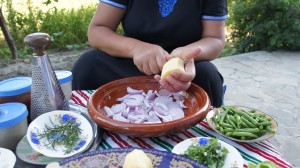
After potatoes come the carrots, cored to remove the woody center.

Then squash and green beans.
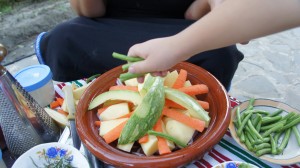
Add peppers and tomatoes (the tomatoes peeled and seeded).
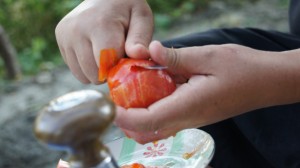
Add parsley and cilantro, finely chopped, and finely grated garlic.
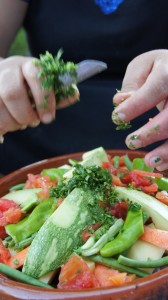
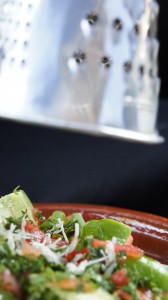
Then come the spices: pepper (1 tsp), paprika (2 tsps), turmeric (2 tsps), ginger (1 tsp), salt (2 tsps). Garnish with several sprigs of fresh rosemary, and drizzle generously with olive oil.
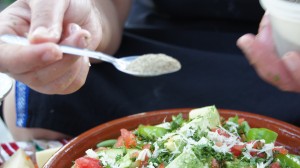
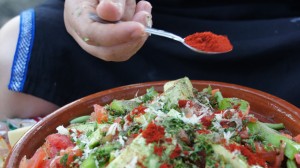
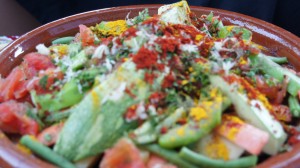
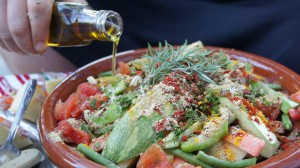
“It’s so beautiful, it’s like a painting!” says Jeremy.
You put the top on and cook the tagine on the stove (or a fire) until the vegetables are soft and well-flavored. (I like it cooked a little less than is typical for Morocco.) The indentation in the top of the tagine cover is filled with water to help keep the food from drying out.
Et voila! (I failed to take a photo of the finished tagine because we were so busy gobbling it up: you’ll have to use your imagination.)